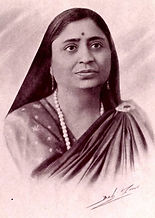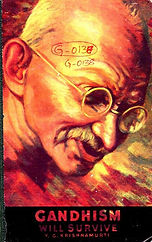OFFICIAL WEBSITE OF DR S. SRIKANTA SASTRI, M. A., D. Litt (1904 - 1974)

Featured > Y. G. Krishnamurti
y. g. krishnamurti
(Click CTRL and + to enlarge text)







Yelandur Gopalasastry Krishnamurti (Y. G. Krishnamurti) was born into a Brahmin family in Yelandur in the year 1911. His father Gopala sastry and mother Lakshmi Narasamma had six children (four daughters and two sons). His father Gopala Sastry was a rich landlord who also functioned as a local school teacher. According to reports he was very popular as a teacher and Vedic pundit. He completed his bachelor’s degree in arts from Maharaja’s College, University of Mysore and did his M. A. in English literature under the tutelage of famous poet Prof B. M. Srikantaiah. He was also a student of S. Srikanta Sastri. Prof B. M. Srikantaiah often consulted his student Y. G. Krishnamurti with regard to his writings and translations. He was deeply involved in the freedom struggle as a student leader and he was arrested and jailed on several occasions. People still remember him as a great orator in Kannada and English. According to his mother, on several occasions he was released from jail at the instance of Prof J. C. Rollo – Principal of Maharaja College, Mysore to attend examinations.
Krishnamurti travelled widely all over the country meeting such leaders as Mahatma Gandhi, Pandit Jawaharlal Nehru, Dr S. Radhakrishnan, Babu Rajendra Prasad and members of the Nehru family such as Krishna Hutheesing – the youngest sister of Jawaharlal Nehru and Rameshuri Nehru. He authored several books in English before Independence recording the struggle as well as a future vision of the country. Some of these books carried either an introduction or a foreword by such eminent people as Babu Rajendra Prasad, Dr B. Pattabhi Sitaramayya, Bhulabhai. J. Desai, Mrs Rameshuri Nehru, Dr S. Radhakrishnan and Dr S. Srikanta Sastri. For example the book “Gandhism for millions” carries a foreword by Dr Rajendra Prasad and an introduction by His Excellency Dr M. S. Aney – Governor of Bihar.
Krishnamurti often visited Dr S. Srikanta Sastri while writing his books for consultation and advice. Dr Sastri often made changes in the manuscript and gave him a direction. Some of these books written after India gaining Independence fall into the category of Hagiography. After graduating from Maharaja’s College, Krishnamurti wrote a biography of Mysore Tathaiah – M. Venkatakrishnayya, a few months after the latter’s demise. Krishnamurti dedicated to Dr Sastri his next book titled “Indian States and Federal Plan”, which was published in 1939 on the eve of the Second World War. Dr Sastri wrote a foreword to one of Krishnamurti’s books titled “Independent India and a New World Order” published in 1942. Incidentally, this foreword caught the attention of German propaganda chief and Adolf Hitler’s right hand man – Joseph Goebbels. Goebbels would go on to announce Dr Sastri’s name along with S. Radhakrishnan’s over Berlin radio at the height of Second World War quoting their works. Goebbels also mentioned that these two were opposing the British colonial rule in their writings. This led to Dr Sastri being summoned by the British Secret Service Police and interrogated about his involvement in this Freedom movement.
Krishnamurti went to Bangalore and took up employment under Sir M. Visvesvaraya as a Secretary on a salary of Rs. 75 per month. During this period he wrote a book titled “Sir M. Visvesvaraya: A Study”. Here he encapsulated the economic policies as envisaged by M. Visvesvaraya for free India. This book was published by the well-known Industrialist of Bangalore - B. M. Srinivasaiah, who was involved in the manufacture of soaps and detergents and regularly imported raw materials like Naphtha from Europe. At the beginning of the Second World War, Naphtha was in short supply. It was during this time that Dr S. Sastri advised and forewarned Srinivasaiah of Benito Mussolini’s impending entry into the Second World War and the consequent need to import naphtha in adequate quantities beforehand. This invaluable piece of advice helped the industrialist import sufficient quantities of naphtha well before the War cut off the regular trade routes thereby helping him save thousands of rupees. As a mark of gratitude, Srinivasaiah sent Dr S. Srikanta Sastri a shaving set and an American gabardine suit cloth. From Bangalore, Krishnamurti went to Bombay where he authored the Congress Souvenir of 1950. This brought him in conflict with K. T. Shah. Before leaving for Bombay, he had procured from Dr Sastri fifty copies of “Proto-Indic Religion” with the hope of selling them through “Popular Book Depot” in Bombay.
Similarly, Krishnamurti delivered of Dr Sastri’s manuscript on “Sources of Karnataka History” to Karnataka Historical Research Society, Bombay (Mr. Halbhavi) for publication. Sadly, neither of these endeavours came to fruition. In the year 1953, Krishnamurti went to Nepal and befriended King Mahendra. While in Nepal, he edited a book of poems by King Mahendra and in 1969, even authored a biography on the King. This won him Nepal’s highest civilian honour – “Gorkha Dakshin Bahu – II” which was bestowed on him in October, 1969. He visited Cochin, Kerala during the rare celestial event of Total Solar Eclipse and announced to the press that he was going to watch the event with his naked eyes. Accordingly, he did watch the event before and after for a duration of ninety minutes. The famous Kerala ophthalmologist Dr Mathews examined him after the eclipse and found his eyes to be in normal condition. The doctor declared it to be a modern-day miracle.
This incident was reported in Kannada weekly “Prajamatha” on Dec 26, 1976. According to Krishnamurti's family members, he passed away in Kathmandu, Nepal on 19 January, 1977. In India, his death was widely reported in such newspapers as Indian Express (20 Jan, 1977), The Hindu, Prajavani and Deccan Herald. He is supposed to have donated his valuable library and art objects to a research foundation in Nepal.
One can clearly describe Krishnamurti as a shooting star, which blazed across the Indian sky in the 1940s and 1950s, when Indian Independence history was being enacted. He was a charismatic personality endowed with intellectual abilities as well.
No one can question Krishnamuti's patriotic zeal and commitment to India’s freedom. He also wanted India to be a modern superpower in Asia, playing a dominant role in international politics. He believed in Gandhism and practised such Gandhian precepts as Non-Violence and Peace. He admired Jawaharlal Nehru as a great leader who was leading the country from a quagmire of poverty and ignorance. It is not known what caused disillusionment in him to seek a spiritual asylum in Nepal. But throughout his life he was active and creative and the word ‘mercurial’ may aptly apply to his personality. Was he a man of missed opportunities..? Perhaps, India did not make use of his talent in shaping the destiny of this great country. Many such great souls must have fallen on the way side in the path of progress. India developed its own brand of politics which kept the idealists and visionaries out of its ken.
Here is a list of Krishnamurti's works gathered from various sources.
• “The 1938 Haripura Congress Souvenir” (1938)
• “Indian States and the Federal Plan” (1939)
• “Constituent Assembly and Indian Federation” (1940)
• “Constituent Assembly” (1940)
• “Sir M. Visvesvaraya: A Study” (1941)
• “Reflections on the Gandhian Revolution”
• “Jawaharlal Nehru – The Man and his Ideas” (1942)
• “Independent India and a New World Order” (1943)
• “Gandhi Era in world politics’’ (1943)
• “The Betrayal of Freedom” (1944)
• “Back to Sanity” (1945)
• “Salute the Mahatma” (1946)
• “Freedom – My Destiny” (1946)
• “Freedom in an age of revolution” (1947)
• “Gandhism for millions” (1949)
• “Gandhism will survive” (1949)
• “Rajendra Prasad: His Personality and Philosophy” (1952)
• “Neo-Gandhism” (1954)
• “The Sikh – Life View” (1961)
• “His Majesty King Mahendra” (1963)
• “King Mahendra: Poetic Values and Technique”
• “The Mahendra Era: Radio Nepal”
• “Rani Aishwarya”
• “Topography of Nepal”
• “Political Ideology of King Mahendra"
• “Rebel King and Statesman: King Mahendra of Nepal” (Analytical Biography) (1964)
• “Hind ka Pir” (1966)
• “King Mahendra – The Poet” (1969)
• “The Great Yogic Sermon” (1969)
• “Jawaharlal Nehru”
• “Samudrika: The Hindu art of sex and body – signs predictions” (1971)
• “The Twentieth Century Tantra”
Extracts:
"..INDIA has risen to freedom with Gandhism. The makers of ruin and slavery write their distaste of its confident nationalism in flames and bullets. But the total Process is dictated by a revolutionary impulse. The Mahatma opens many a young eye to the beauty of absolute truths. He tells us that the pattern of history is concealed neither in the methods of production nor in the atomic formula but in spiritual patriotism. His ethic heralds a richly coloured age of passion, climaxes, wayward idealism, mendacity and razor-slashing. Gandhi has the clearest sense of his tragic destiny and his assassin does all the devil's work. Millions sit weeping by the waters of the Jumna while leaping flames devour the stoic frame of the Revolutionary Father. He tries to adapt the environment to his ethic. How can all the geese turn into swans in a single life-time! As there are no veils between him and reality, he exhorts his age to preserve the law of humanity.
In the setting of the Gandhian India one sees full-blooded, restless and heroic types turning their longing eyes on this eternal substance, the treasure trove. Their judgements are no makeshifts and no bitter irony, can disturb their moral mood. However, the many period events stay in their mind and their understanding is beclouded by a film of sadness. Without the potent magician they see in the corridors weird shapes, seductions and hints of dark forces. Their pilgrimage to the alluring heights is not brief. They must cut new paths in the rock and walk over pendant clifts..."
%20Book%20Front%20Cover_JPEG.jpeg)
